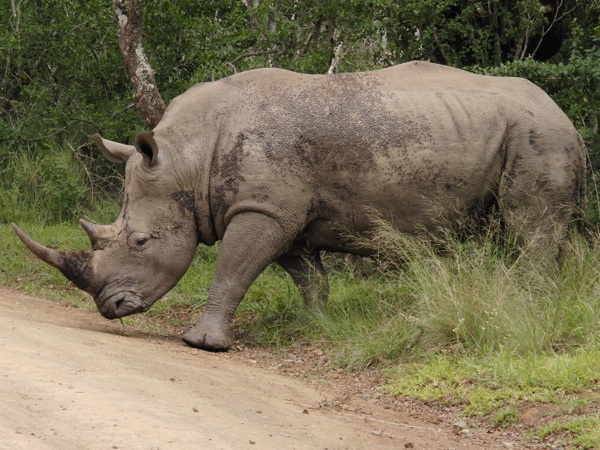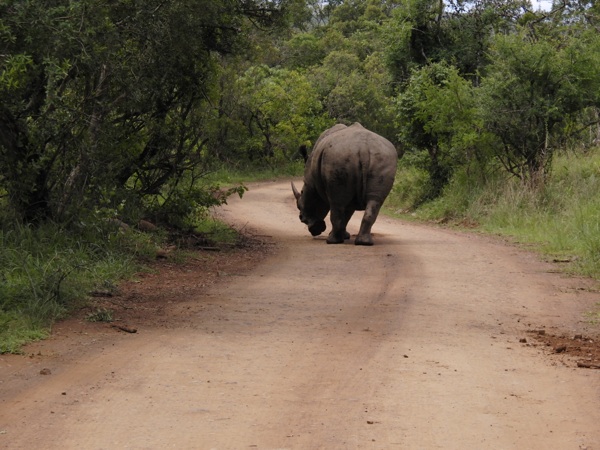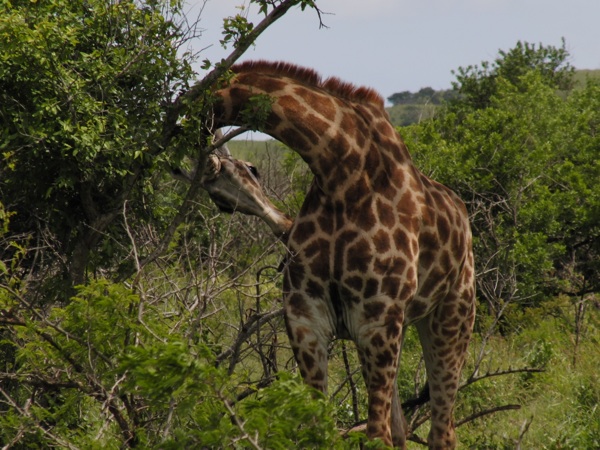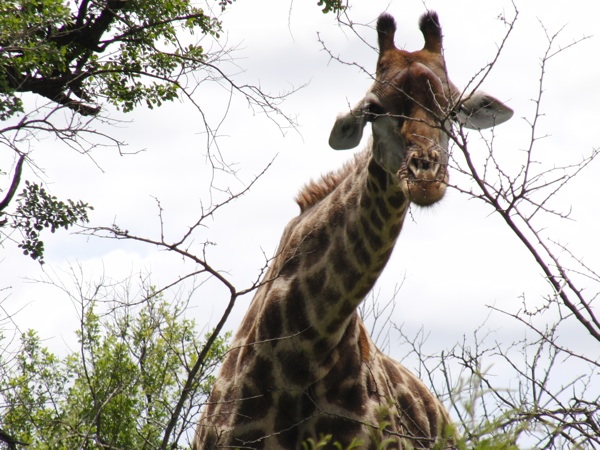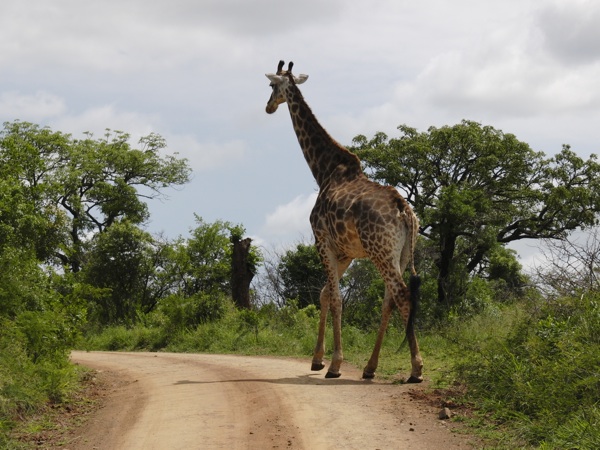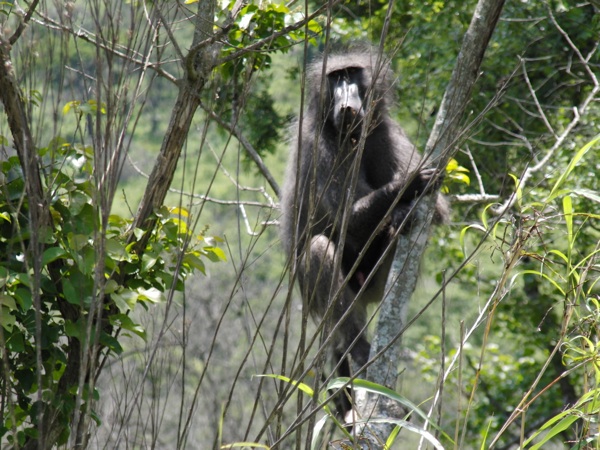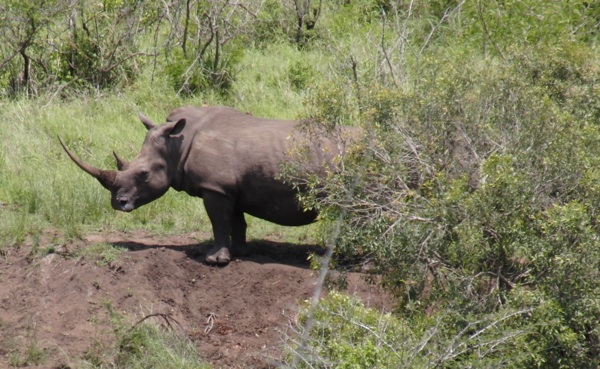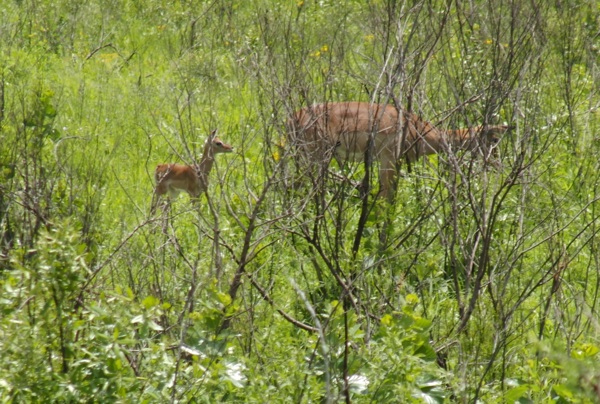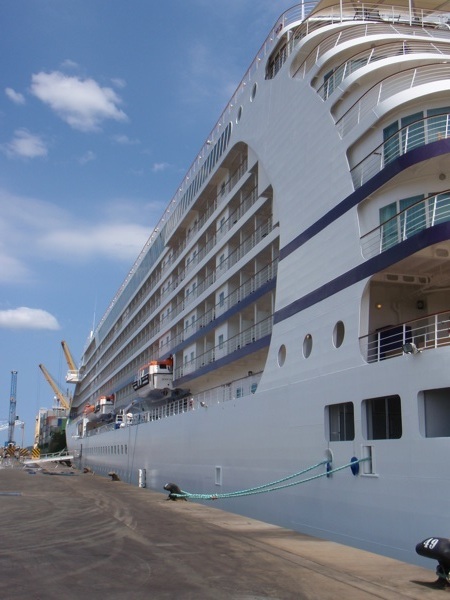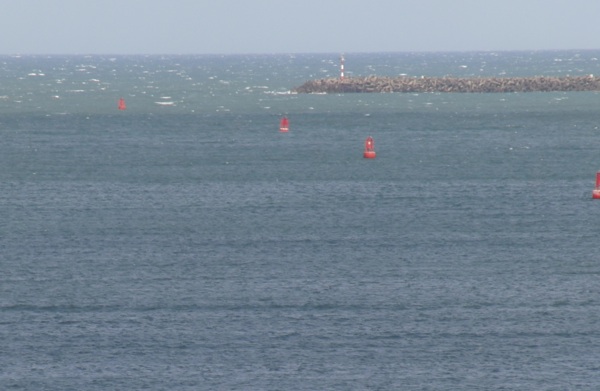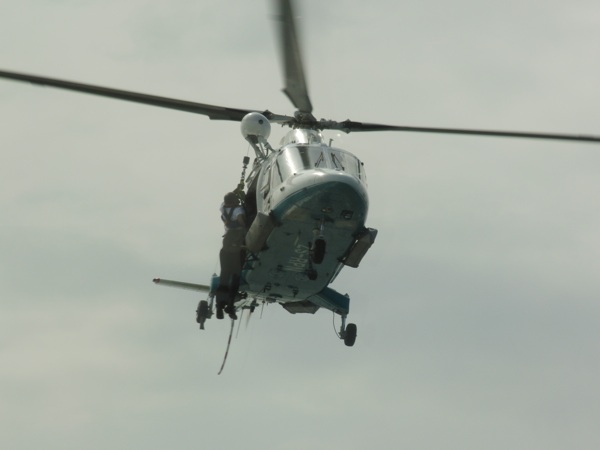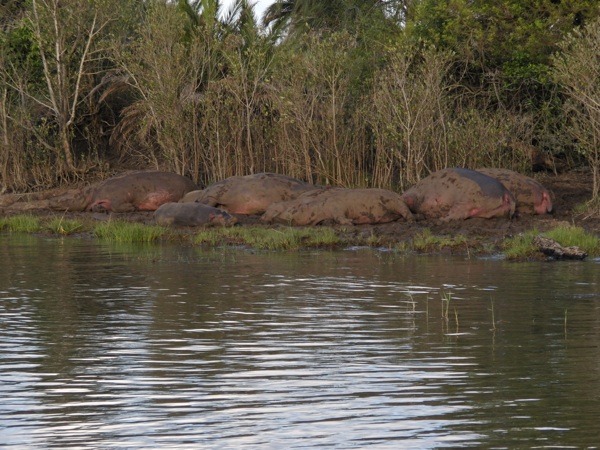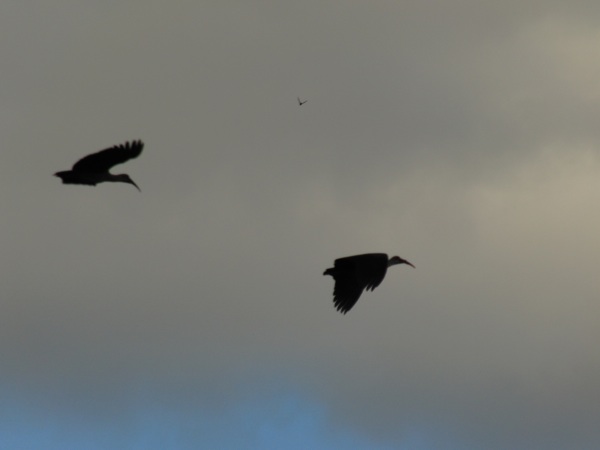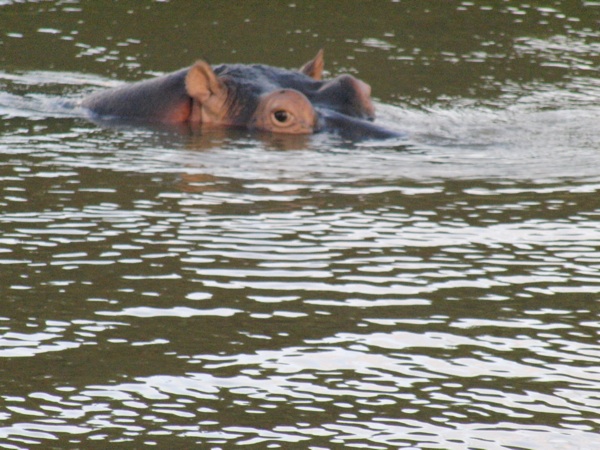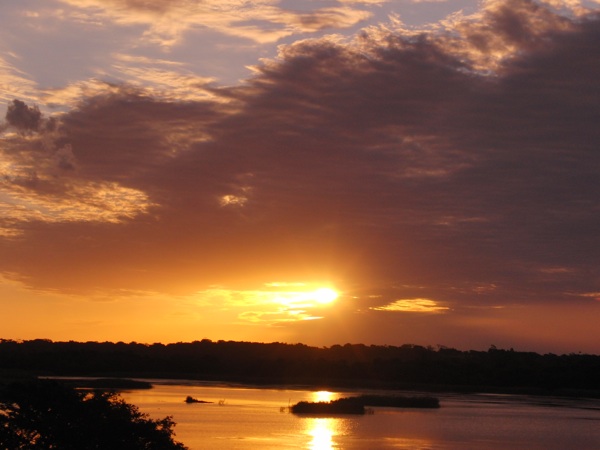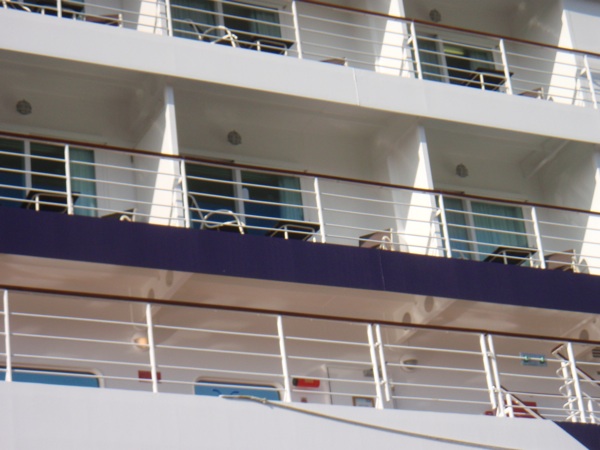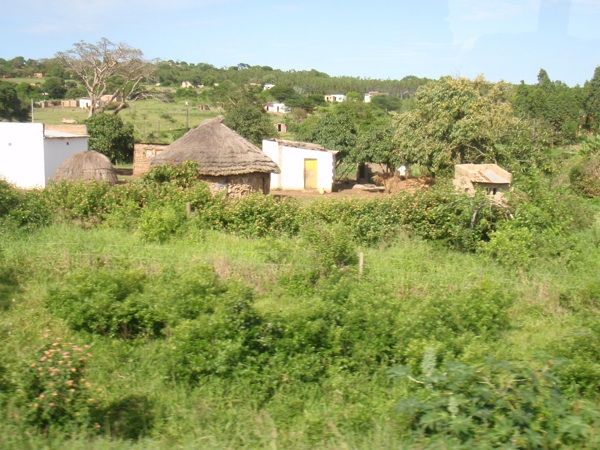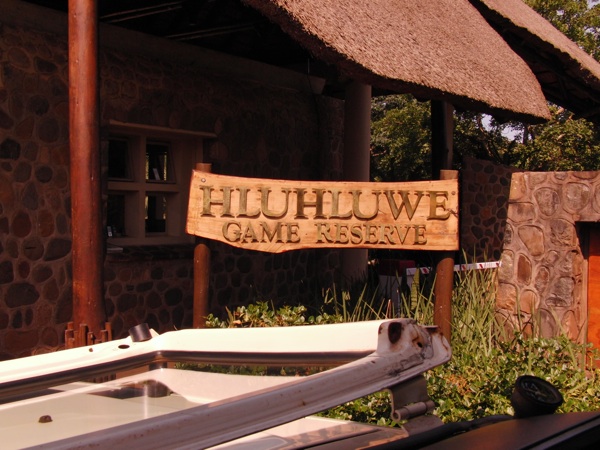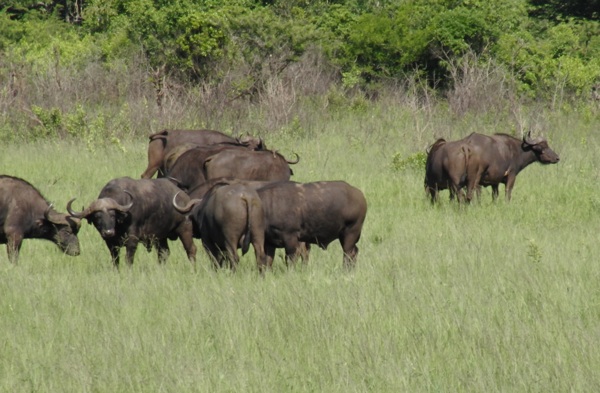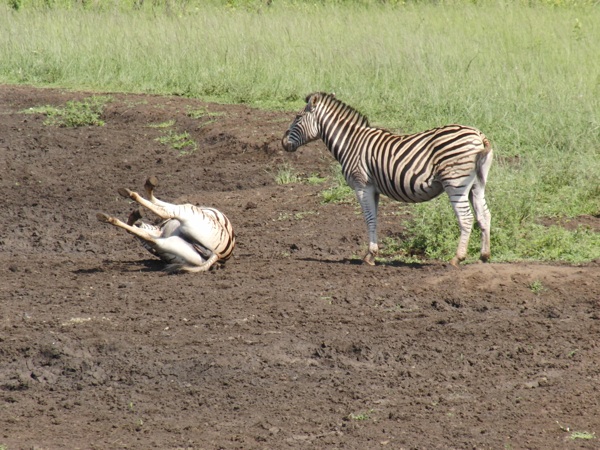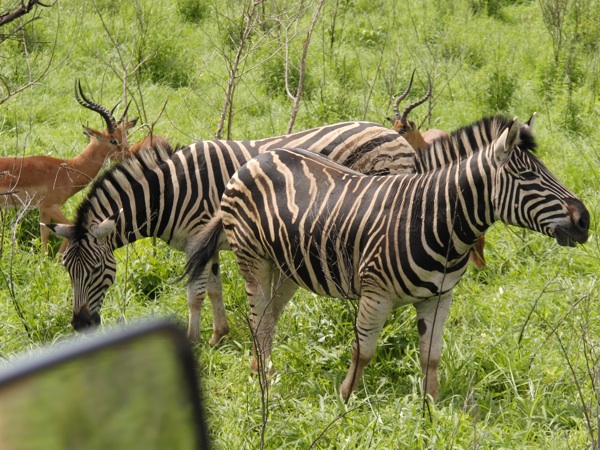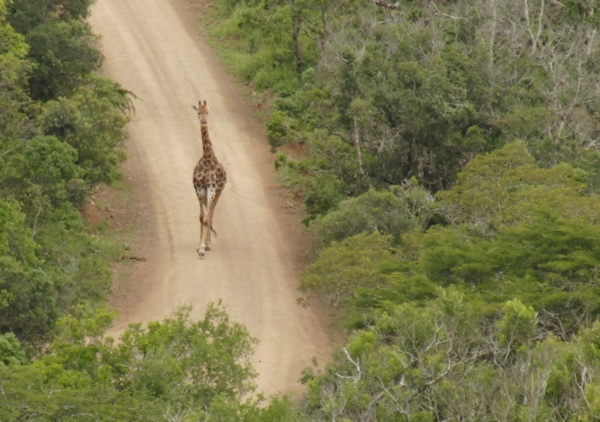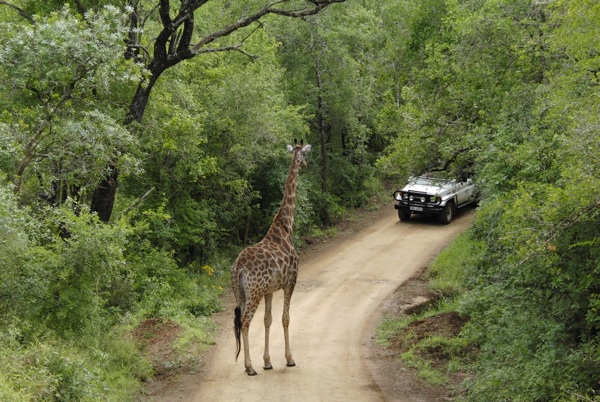The Bollywood to South Beach Voyage – Regent Seven Seas Voyager, October 29-December 18, 2009
Text by Snookums, Pictures by Filbert
Part Twenty
November 19 (Thursday, Day 22, Cruising the Coast of South Africa) –
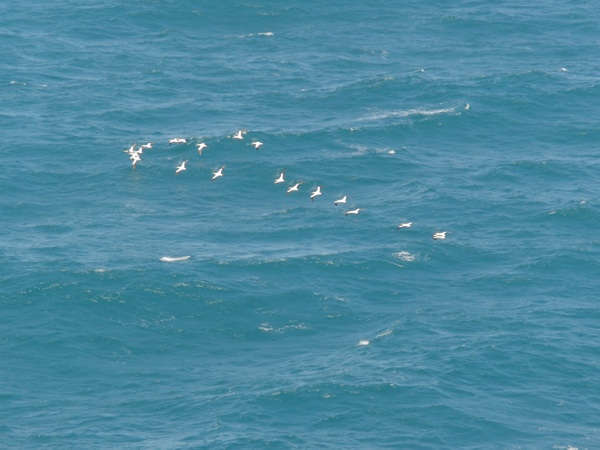 |
| Boobies in formation |
We woke up around 10 AM. We think we slept so long from the Dramamine. Filbert went to the 10:30 Cape Town port lecture and Snookums stayed in the cabin. Our stick-on thermometer said it was 65° and it looked kind of cool and dreary. We were surprised to find out that it was gorgeous outside by the pool. Although the ship was still rocking and rolling a little bit and there were whitecaps on the water, there was no breeze or wind whatsoever by the pool. We enjoyed our lunch and then Filbert went to the Observation Lounge to watch for dolphins and whales while using his PC. Snookums read her book outside for awhile before returning to the cabin and updating the journal.
More after the jump . . . While Snookums was outside, the widow and her daughter spoke to a man at Snookums’s table. The widow (her husband passed away on the Seychelles snorkel trip) decided to stay on the ship and finish her cruise in Ft. Lauderdale as planned. Her daughter was to join her in Richard’s Bay and her sons are joining her later. Anyway, her daughter managed to get to Richard’s Bay, South Africa. Her children convinced the widow that there was really no point in interrupting her cruise to come home. After all, she was going to come home to an empty house. Staying on board does make sense when you think of it that way. Also, her husband was told prior to getting on the ship that he should stay home due to his congestive heart failure. And, he was actually hospitalized in Dubai while the ship docked there for two nights. At least he passed away while doing what he wanted to do – travel.
For those of you wondering what there is to do during a day at sea, the following activities happened between 11:00 and 3:00 today:
11:00 – Slot Tournament, Casino
11:00 – Computer Class, Prime 7
11:15 – Ping Pong, Deck 11
11:45 – Bingo, Horizon Lounge
12:00-1:30 – Fish Al Fresco, Poolside
1:45 – Bridge, Card Room
1:45 – Ballroom Dance Review, Horizon Lounge
2:00 – 6 Hole Crazy Golf, Atrium
2:30 – Baseball Enrichment Lecture, Constellation Theatre
2:45 – Shuffleboard Tournament Final, Sports Deck
3:00 – Blackjack Tournament, Casino
3:00 – Anyone for Chess?, Library
3:00 – Arts & Crafts Exhibit, Horizon Lounge
Tonight was a formal night (the farewell dinner) but we decided to stay in our casual clothes and went to upstairs to La Veranda for dinner. It was a South African Wine Dinner and featured springbok carpaccio, ostrich consommé and African rock lobster for the appetizers and we each chose the wild boar for our entrée. Filbert enjoyed all of it (and corresponding wines) but Snookums didn’t care for the springbok carpaccio or wild boar that much.
November 20 (Friday, Day 23, Cruising Cape of Good Hope and docking in Cape Town, South Africa) –
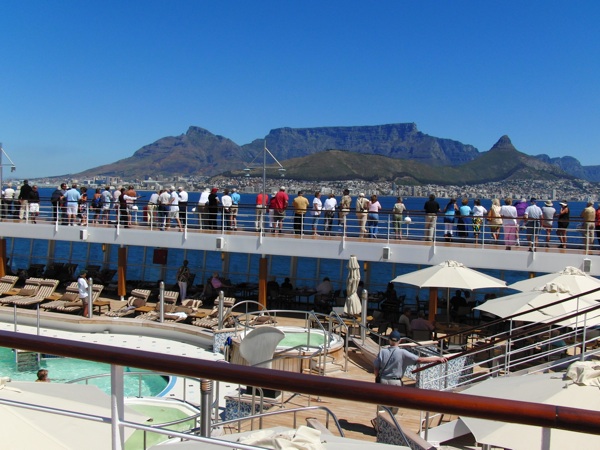 |
| Cape Town, with Table Mountain overlooking |
We were scheduled to dock in Cape Town at 4 PM so we got to the Observation Lounge around noon to watch our progress around the Cape of Good Hope and the land between it and Cape Town. Along the way Filbert saw a sunfish in its horizontal basking position and was able to get a great photo of it. These fish can grow to 2,200 pounds!
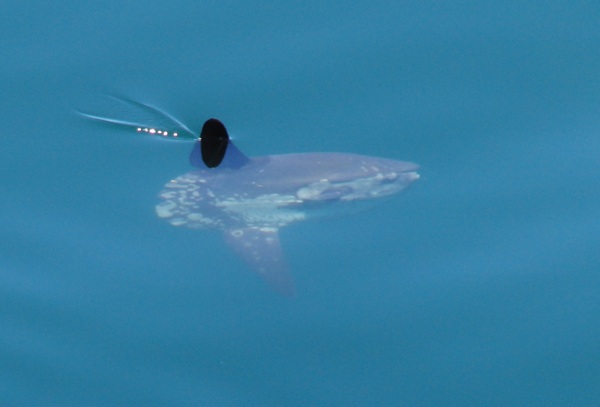 |
| Sunfish |
Snookums saw three sharks that had white snouts for the front half of their snouts but didn’t have a camera. We both saw a whale.
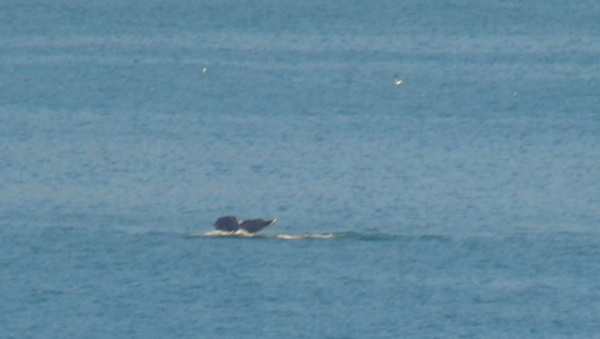 |
| Whale flukes off Cape Town |
The captain maneuvered the ship between the very narrow opening in the Victoria and Alfred Waterfront and we docked. We got the good side to look at: Table Mountain in the background with the beautiful V&A Waterfront (and its Cape seals) in the foreground. Most cruise ships are too big to dock at the V&A Waterfront and have to dock at the ugly industrial port a few miles away. We were fortunate that there was space for our ship since it’s a stunning location.
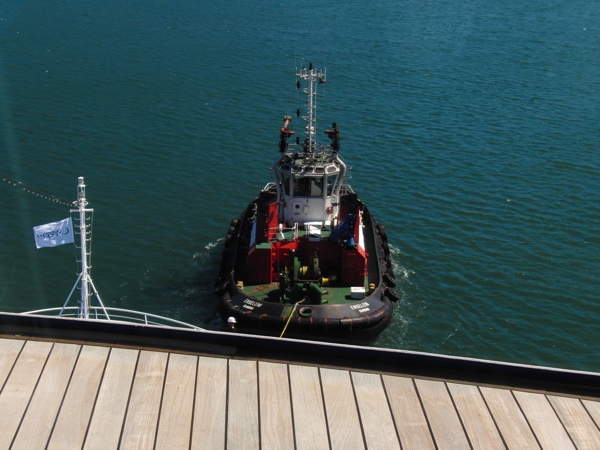 |
| Tug, with line attached |
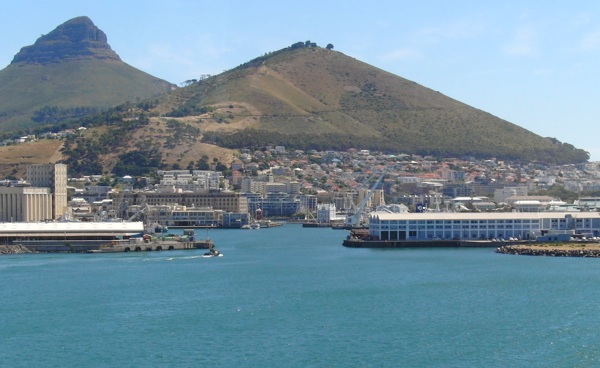 |
| It’s going to be close |
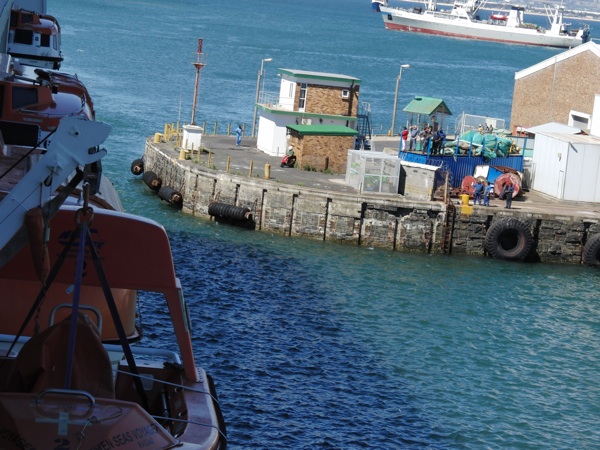 |
| Really, really close |
As soon as we docked, we got off the ship to continue our quest for a sport jacket. This commercial and tourism area was developed in the late 1980s and is the most profitable (or busiest – I’m not sure what the guide said) area in all of South Africa. A huge fancy mall was right next to the ship. We had a couple of hours before our tour so we went in all the men’s stores we could find. We found several sport coats that were too ugly or too expensive or both (mustard yellow plaid for $1,200) and ended up only buying some postcards.
We hurried back to the ship in time to board a bus to take us to Signal Hill to watch the sunset while enjoying canapés and sparkling wine (Snookums brought a Diet Coke). We got to the top of the high hill and got out of the bus and were stunned not only by the views, but by the wonderful catering job. Several tables were spread about this public area and we were given glass plates to fill, as well as real champagne glasses. Several of the “public” were told that the goodies weren’t for them. We ate the yummy canapés and enjoyed the beautiful sunset as well as the guinea fowl wandering around our feet. We got back on the bus and returned to the ship and enjoyed a final dinner with Carl. It was his last night since this segment of the cruise would end tomorrow for many passengers.
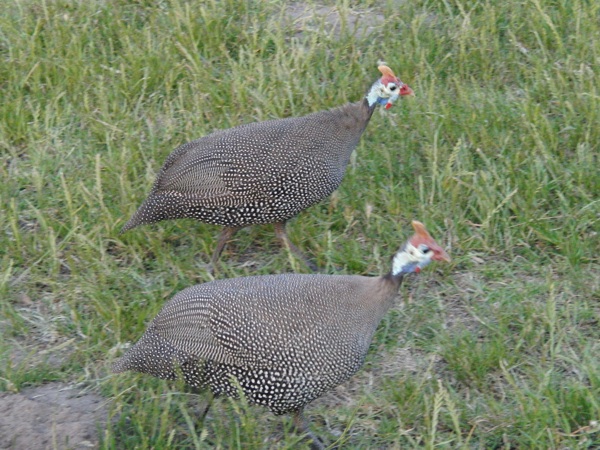 |
| Guinea fowl at Signal Hill |
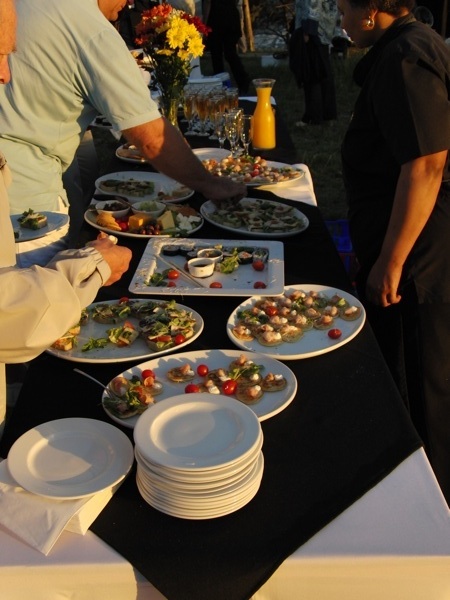 |
| Food |
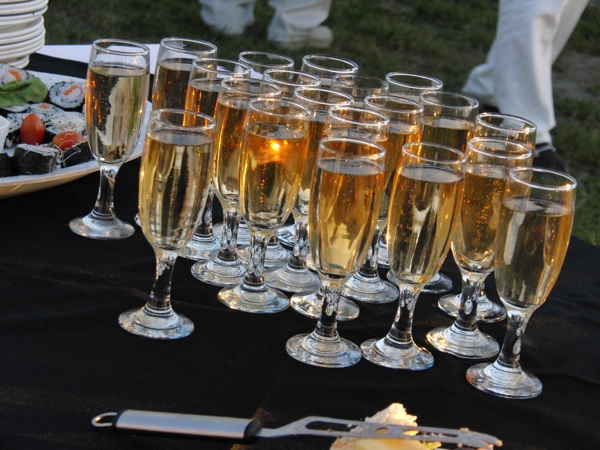 |
| Drink |
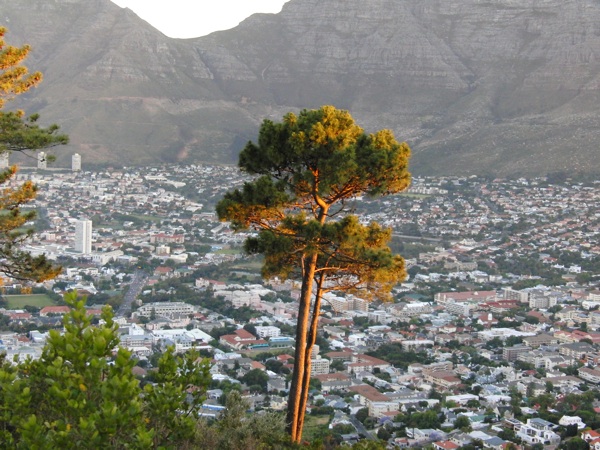 |
| Trees catching the waning sun |
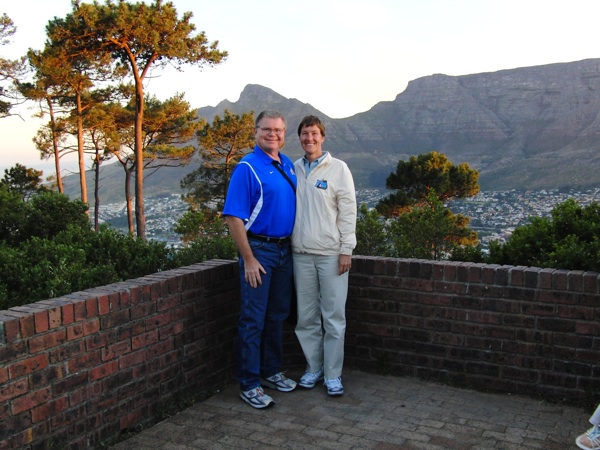 |
| Your happy correspondents |
Next: The actual Signal Hill sunset, then we go to to prison. And high tea.













